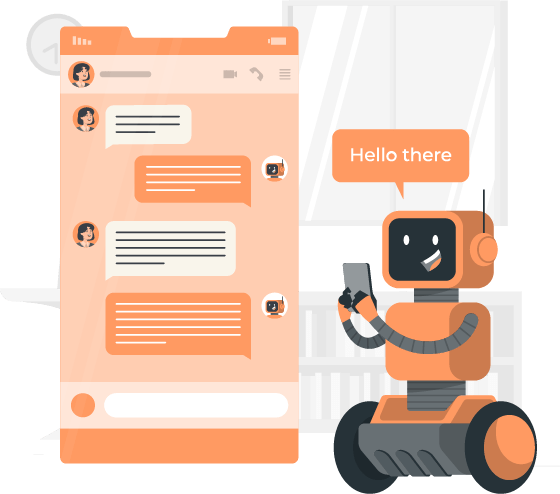-
Services
-
Locations
- Philippines
- United States
- Colombia
- Eastern Europe
Locations -
Industries
-
Resources
- E-Books
- Blog
- Case Studies
Resources - About Us
- Careers

Guide to Voice of the Customer Analytics
Voice of the Customer Analytics stands as a cornerstone for driving customer-centric innovation and strategic growth.
A comprehensive guide that delves into the world of Voice of the Customer (VoC), providing you with the tools and techniques to effectively capture, analyze, and leverage customer feedback.
Voice of the Customer Analytics:
Using AI to supercharge your contact center’s QA program
Everyone is rushing to adopt AI as part of their customer service toolbox.
In some cases, it can feel like a mad scramble — like a modern day gold rush that you need to be a part of (or else!). But rushing to roll out new implementations of AI in customer service brings serious risks to your business.
Do you really want to roll the dice on the experience you’re giving your customers?
Do you want to gamble with their satisfaction?
Instead of jumping right into launching a chatbot or rolling out customer-facing artificial intelligence, you should consider starting with an indirect implementation.
There’s no better way to do this than with your Voice of the Customer (VoC) analytics and QA program — two customer experience functions that used to be separated, but are blending together and evolving due to improvements in AI.
What’s the difference between direct and indirect use of AI?
In the context of customer experience, direct and indirect uses of AI refer to how AI is helping your customer.
A direct implementation of AI means the artificial intelligence is directly in contact, and therefore directly aiding your customers. Indirect implementations don’t interact with customers. Instead, they help you build a better customer service team — through analytics, by increasing productivity, and through assisting your support agents in various ways.
| Chatbots are the classic example of a direct AI implementation. An indirect implementation of AI — like using AI in your VoC and QA process — carries far less risk and, in many cases, can have an even greater impact on your team and your customers. |  |
That’s because indirect implementations of AI supplement and enhance your existing processes and team members. They take what’s already working and make you even better at those things.
Rather than making deflecting customer conversations a priority, they’re a way of doubling down on giving customers an incredible support experience.
To be fair to chatbots, there’s absolutely space for conversational AI chatbots in the customer journey. Our Tech and AI Solutions team helps customers create, train, and implement them. We just think they often get too much of the spotlight.
Understanding how AI is changing VoC analytics
Voice of the Customer Analytics is the process of understanding the needs of your customers.
 |
Historically, it’s been the way that CX teams mine data to understand the challenges customers are facing and to uncover insights on ways to improve. |
Because of the level of effort involved in analyzing large volumes of data, VoC analytics has been a reactive and backward-looking process that allowed CX leaders to identify gaps in customer satisfaction and take appropriate corrective actions.
Helpful, but high effort and slow. Many companies just skipped it entirely.
AI is changing all of that
Today’s AI VoC analytics tools (see below for some suggestions) can monitor 100% of your inbound support conversations — across all channels — and identify the key concerns of your customers. In near-real time, they can identify customer sentiment and react accordingly.
On top of that, they can also establish the root cause of common issues and highlight shortcomings in agent training. They can also pull in feedback from other sources — like review sites or social media — to give you a full picture of your customer base.
Let’s illustrate what this looks like
In the past, your VoC team might have run a monthly or quarterly analysis of all inbound tickets and survey responses. They’d try to identify things like how support ticket volume impacted customer retention or how customer satisfaction differed across support channels.
Useful info, but it was always at least a month behind.
Today, AI will monitor your incoming conversations in real-time. When a high-value customer emails in and says “I’m so tired of all these technical issues”, the AI will instantly recognize the negative sentiment. Instead of routing that to your normal support queue, it might intelligently route it to your most senior support engineer, while also tagging in the customer success manager for the account.
|
AI unlocks the ability for you to respond in real-time to customer feedback and sentiment. AI also still does the higher-level analysis of trends, often in a way that’s faster, easier, and less bias-prone. |
 |
The AI-driven evolution of quality assurance
Quality assurance programs are another critical piece of most customer experience organizations.
And, just like with VoC, artificial intelligence is dramatically changing what it looks like. Traditionally, customer service quality has been measured using a combination of customer feedback (like CSAT surveys) and quality scores (from your QA program).
QA analysts would analyze a small sample of your support team’s conversations, auditing them against a scorecard to gauge if they were quality interactions. This process is proven and it works well, but it’s time consuming and manual — just like the old way of doing VoC analytics.
|
Because today’s AI tools are capable of monitoring and analyzing 100% of your customer interactions, CX leaders are now able to get insights into the quality of all of their customer conversations. And it also means you’re not as reliant on CSAT surveys, which have their own issues. CSAT surveys typically have low response rates, and often they reflect dissatisfaction with the product or policies, not with the agent who provided support. |
 |
AI-powered quality management tools have a lot in common with VoC tools. Simply set your evaluation criteria and the AI will go through every conversation received and grade it against your rubric. A scorecard is then produced for every agent, highlighting areas of improvement or a knowledge deficit.
Identify trends, diagnose technical issues, monitor process adherence; all of these tasks can be almost completely — or completely — automated. This removes bias in the product and operational feedback, and provides said feedback in near real-time.
Implementing AI into your QA and VoC program
The process of adopting AI tools always
requires some work.
But indirect AI implementations are often easier to implement than customer-facing AI implementations, because you’re able to launch and iterate as you go. While you don’t want to launch a broken solution to your agents, you have more freedom to build and iterate since customers aren’t interacting with it directly.
And while customer-facing implementations require things like a robust and up-to-date knowledge base, implementing AI into your QA and VoC program doesn’t necessarily require spending weeks auditing your knowledge base.
Once you’ve decided to leverage AI to monitor customer interactions for QA and Voice of the Customer analysis, here’s what you need to do.
Pick your tool or partner
You have two main optionswhen implementing your new AI solution: do it yourself or partner with an experienced solutions provider.
There are a ton of great AI solutions on the market that can analyze your customer interactions and generate actionable insights. These include:
Many of these tools offer additional functionality and features that can also help your customer experience organization — but they can also quickly get overwhelming.
And that’s one of the big downfalls of the DIY approach to implementing AI. With all the options and all the hype, it can be hard to know what solutions will move the needle for your company.
That’s where partnering with an experienced solutions provider like Peak Support can make a huge difference. Because we’ve helped dozens of companies solve customer support challenges, we can help you navigate the process of exploring and implementing AI. Our team offers implementation services for organizations brand new to AI, as well as optimization services to help you get more from your existing AI solutions.
Clean up your processes and scorecards
Once you’ve chosen your approach, it’s time to get ready for the actual implementation.
To implement AI for your VoC and QA programs, it’s critical that you already have set processes and scorecards in place. After all, if you want AI to review and score your customer conversations, you need a clear understanding of what a great interaction looks like for your brand.
Before implementing your new AI solution, it’s a good idea to take some time and optimize any processes that are dated or feel particularly painful. Clearly documenting your processes is also important, as your AI solution will learn from those resources.
Launch and iterate
There’s no such thing as an AI implementation that’s 100% perfect right from the start.
|
Training your AI solution on your knowledge base, historical customer interactions, and other documentation will help — but AI models are constantly learning and evolving. |
 |
That’s why it’s important to build a process of iterating and optimizing your AI solution into your implementation timeline. As you roll out your solution to your team, you’ll want to pay close attention to what’s working well (and what’s not). Create avenues for team members to provide feedback, whether they’re frontline agents, team leads, or QA analysts.
Speaking of QA analysts: When you roll out an AI solution to handle QA and VoC responsibilities, it’s going to involve a dramatic shift in their roles.
Instead of spending the bulk of their time reviewing individual customer conversations, your QA analysts will shift to monitoring your VoC systems. In light of this shift, some companies are rebranding these roles from “QA Analyst” to “Voice of the Customer Analyst.”
The end goal of both roles is the same, but a VoC analyst is focused on extracting insights and trends from across all of your customer conversations. These insights can still be used to coach individual agents, but they’ll also be beneficial for informing your training plans and driving ongoing process improvements.
QA & VoC are the best ways to start using AI
Customer experience teams are in the middle of a huge shift.
The ways they’ve operated for decades — tried and true processes — don’t necessarily make sense anymore. Not with artificial intelligence in the picture.
While your QA and VoC programs may have delivered lots of valuable insights in the past, continuing to rely on them for the foreseeable future may not be the best business decision.
Instead of scrambling to adopt AI in risky, customer-facing ways, it’s better to start by implementing AI in internal-facing, indirect ways. This enables you to quickly see a positive ROI from your AI solutions, while not overly disrupting your team or putting your customer relationships at work.
As you create forward momentum from successful indirect implementations of AI, you’ll be better positioned — and more experienced — to explore solutions that more directly impact your customers.
- Voice of the Customer Analytics
- What’s the difference between direct and indirect use of AI?
- Understanding how AI is changing VoC analytics
- The AI-driven evolution of quality assurance
- Implementing AI into your QA and VoC program
- Pick your tool or partner
- Clean up your processes and scorecards
- Launch and iterate
- QA & VoC are the best ways to start using AI
Ready to chat with us?
We’ve helped dozens of innovative companies launch and scale their customer service teams. Whatever you need to grow your business, our flexible offerings can fit. Let’s chat about how outsourcing can unlock new levels of growth for your business.
Talk to Sales






